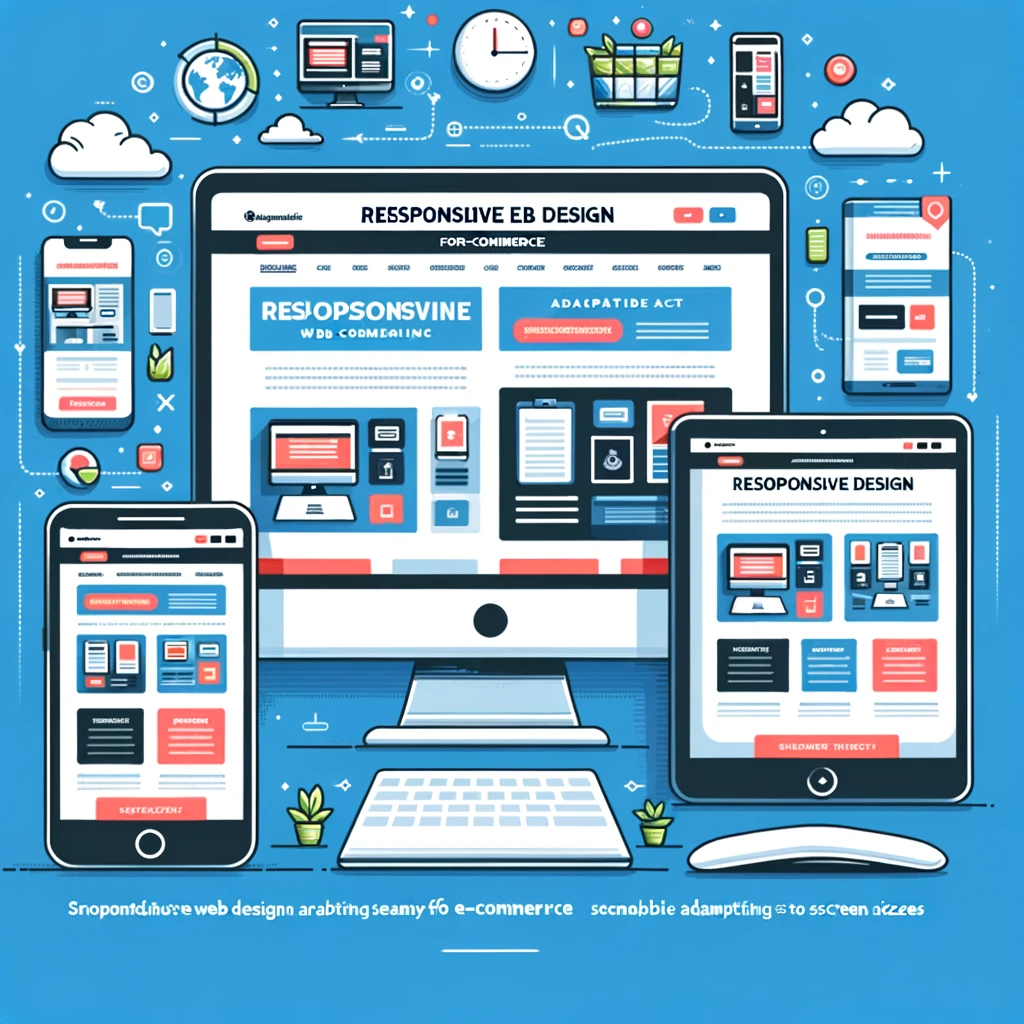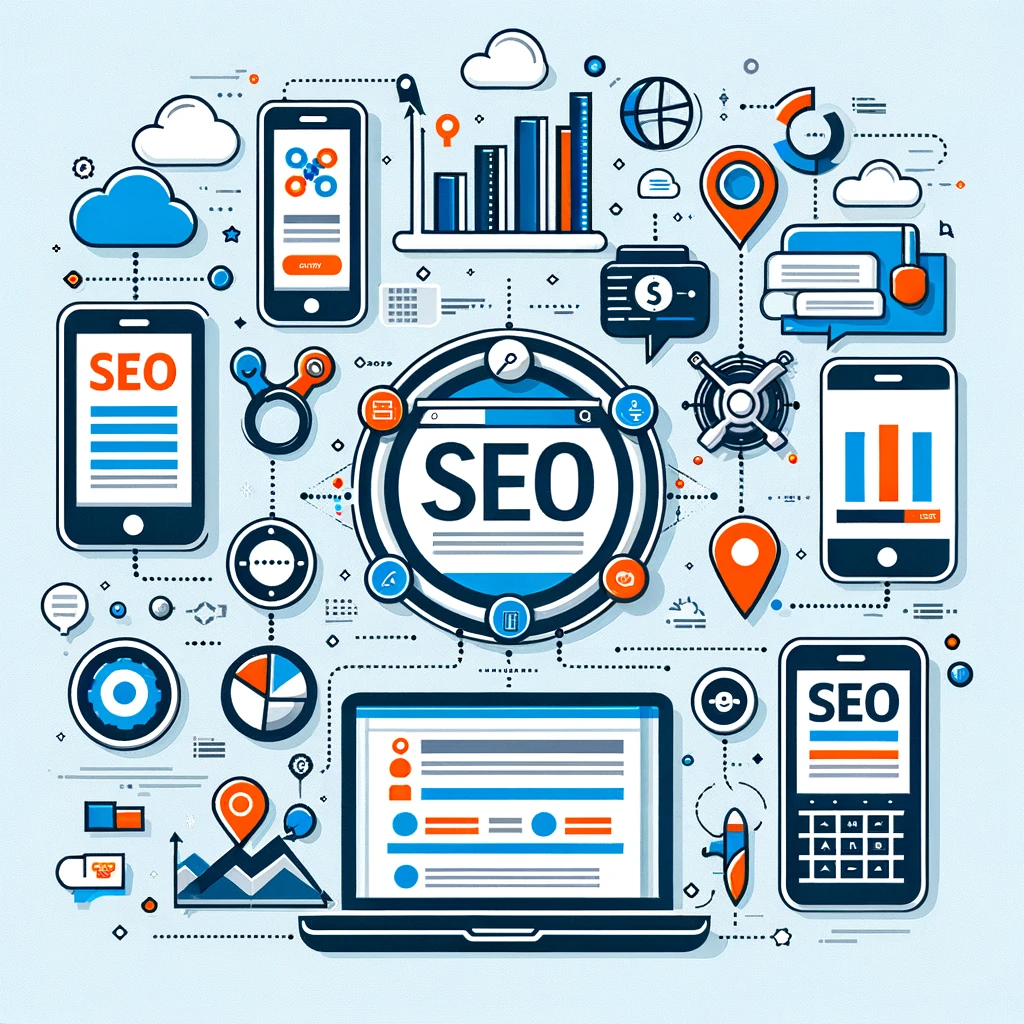In the digital age, the success of an e-commerce business is significantly influenced by its online presence, particularly its website design. A well-designed e-commerce website does more than just showcase products; it creates a seamless, engaging, and intuitive shopping experience that encourages visitors to become loyal customers. This article delves into the crucial elements of e-commerce web design that can drastically enhance user experience and boost sales.
The landscape of e-commerce is constantly evolving, driven by technological advancements and changing consumer behaviors. In this realm, web design plays a pivotal role. It's not just about aesthetics; it's about functionality, ease of navigation, and the overall user journey. From the layout to the checkout process, every aspect of web design holds the potential to impact customer engagement and conversion rates.
As we explore the strategies for maximizing online success through effective web design, we'll cover key areas such as responsive design, SEO integration, the use of visual elements and branding, and the incorporation of advanced features and functionalities. These insights are aimed at helping you create an e-commerce platform that not only looks great but also performs exceptionally, turning visitors into customers and customers into brand advocates.

Responsive Design for Optimal User Experience
In the world of e-commerce, responsive web design is not just a trend; it's a fundamental necessity. With an increasing number of consumers shopping on various devices, from smartphones to tablets and desktop computers, a responsive design ensures that your website adapts seamlessly to any screen size, offering a consistent experience to all users.
1. Why Responsive Design is Essential:
Responsive design is crucial for several reasons. Firstly, it significantly improves user experience. A website that looks good and works well on any device is more likely to retain visitors. Secondly, Google favors mobile-friendly websites, which means a responsive design can also boost your site's SEO ranking, making it easier for potential customers to find your online store.
2. Elements of Responsive Design:
Implementing a responsive design involves several key elements:
- Fluid Grids: Websites are built on a flexible grid system that adapts to screen size.
- Flexible Images: Images resize within their containing elements to ensure they look good on any device.
- Media Queries: These CSS techniques allow the content to respond to different physical characteristics of the device being used.
3. Enhancing the Shopping Experience:
Responsive design goes beyond mere aesthetics. It ensures the functionality of your site remains intact across devices. For instance, easy-to-navigate menus, legible text, and accessible buttons are crucial for a smooth shopping experience. This design approach reduces the frustration of zooming and scrolling that can often lead to site abandonment.
4. The Impact on Conversion Rates:
A responsive website can lead to higher conversion rates. When users enjoy a seamless experience, they are more likely to complete a purchase. In contrast, a non-responsive design can frustrate users, leading to higher bounce rates and lost sales.
5. Future-Proofing Your Website:
Adopting responsive design means your website is prepared for future devices and screen sizes. It's an investment in the longevity and adaptability of your online presence, ensuring that your e-commerce platform remains competitive and relevant.

Incorporating SEO in E-commerce Web Design
The integration of Search Engine Optimization (SEO) in e-commerce web design is a critical strategy for enhancing online visibility and attracting targeted traffic. A website optimized for search engines goes beyond the aesthetics, focusing on structure, content, and user experience to rank higher in search results.
1. Importance of SEO in E-commerce:
SEO is essential for e-commerce sites because it directly affects how easily potential customers can find your products through search engines. A well-optimized website appears higher in search results, leading to increased visibility and more organic traffic.
2. Keywords and Content Optimization:
Effective SEO begins with keyword research. Identifying and incorporating the right keywords throughout your website's content ensures that your site is found by users searching for the products you offer. This includes product descriptions, blog posts, and meta tags.
3. Site Structure and Navigation:
A search engine-friendly site structure helps search engines crawl and index your website more effectively. This involves organizing your site's content logically, with clear navigation and a hierarchy that makes sense. A well-structured website provides a better user experience, which is also a key factor in SEO.
4. Mobile Optimization and Site Speed:
Mobile optimization is no longer optional. With the increasing use of mobile devices for online shopping, your e-commerce site must perform well on mobile platforms. Additionally, site speed is a critical SEO factor; faster sites are favored by search engines and users alike.
5. Utilizing Analytics and SEO Tools:
Regularly monitoring your site's performance with analytics and SEO tools can provide insights into user behavior, helping you refine your SEO strategy. These tools can identify areas of improvement, track keyword rankings, and measure the effectiveness of your SEO efforts.

Utilizing Visual Elements and Branding in E-commerce Web Design
In the competitive world of e-commerce, the visual appeal and branding of your website play a crucial role in attracting and retaining customers. A well-designed website with a strong brand identity not only stands out from the competition but also builds trust and loyalty among customers.
1. The Power of Visual Appeal:
First impressions matter. The visual elements of your website, including color scheme, typography, and imagery, should be carefully chosen to reflect your brand and appeal to your target audience. These elements are instrumental in creating an emotional connection with visitors.
2. Consistent Branding Across the Site:
Consistency in branding across your website reinforces your brand identity. This includes the use of logos, brand colors, and a consistent tone of voice in all content. Consistent branding helps in building brand recognition and loyalty.
3. Impact of High-Quality Images and Videos:
High-quality images and videos can significantly enhance the user experience. They provide a clearer view of the products, helping customers make informed decisions. Engaging multimedia content can also increase the time visitors spend on your site, potentially leading to higher conversion rates.
4. Designing for User Engagement:
An engaging web design invites interaction. Features like hover effects, animated elements, and interactive product views can enhance user engagement. However, it's essential to balance creativity with usability to ensure a smooth and enjoyable shopping experience.
5. Storytelling Through Design:
Effective web design can tell the story of your brand. Through thoughtful layout and design choices, you can communicate your brand's values, mission, and unique selling propositions. This not only attracts customers but also fosters a deeper connection with your brand.

Advanced Features and Functionalities in E-commerce Web Design
E-commerce websites today need more than just a basic online storefront. Incorporating advanced features and functionalities can significantly enhance the shopping experience, leading to increased customer satisfaction and sales.
1. AI-Driven Personalization:
Artificial Intelligence (AI) can be used to personalize the shopping experience for each visitor. AI algorithms analyze user behavior and preferences to display tailored product recommendations, enhancing the likelihood of purchase.
2. Chatbots for Improved Customer Service:
Chatbots can provide instant customer service, answering queries and assisting in the shopping process. This feature helps in engaging customers, providing quick solutions, and improving overall customer satisfaction.
3. Augmented Reality (AR) for a Realistic Shopping Experience:
AR technology allows customers to visualize products in a real-life context, like seeing how a piece of furniture would look in their living room. This innovative feature can significantly enhance the decision-making process for customers.
4. Seamless Checkout Process:
A streamlined checkout process is vital for reducing cart abandonment rates. This includes offering multiple payment options, a simplified checkout flow, and ensuring security and trustworthiness at every step.
5. Integration with Social Media and Marketplaces:
Integrating your e-commerce site with social media platforms and online marketplaces can expand your reach and provide additional channels for sales. It allows customers to discover and purchase products more conveniently.
Harnessing the Power of Web Design in E-commerce
In conclusion, the digital landscape of e-commerce presents immense opportunities for businesses to grow and thrive. However, success in this competitive arena is heavily reliant on the effectiveness of web design strategies. As we've explored, responsive design, SEO integration, visual elements and branding, and advanced features and functionalities are not just components of a good design but are essential ingredients for creating a successful e-commerce platform.
The journey of e-commerce web design is an ongoing one, with constant advancements in technology and shifts in consumer behavior. Staying ahead in this dynamic environment requires a website that is not only aesthetically pleasing but also functional, user-friendly, and adaptable to future trends. By focusing on these key design elements, businesses can create a powerful online presence that attracts and retains customers, ultimately driving sales and fostering brand loyalty.
As your business continues to navigate the ever-evolving world of online retail, remember that your website is more than just a digital storefront. It's a representation of your brand and a crucial touchpoint for customer interaction. Investing in high-quality web design is an investment in the future of your business, paving the way for continued growth and success in the digital realm.
-
What are the key elements of effective e-commerce web design?
The key elements include responsive design, SEO integration, the use of visual elements and branding, and the incorporation of advanced features like AI-driven personalization and chatbots. Each of these elements plays a vital role in enhancing user experience, improving search engine rankings, and ultimately driving sales.
-
How does responsive design impact e-commerce success?
Responsive design ensures that an e-commerce website adapts seamlessly to different devices, providing a consistent and user-friendly experience across smartphones, tablets, and desktops. This not only improves user engagement but also positively affects search engine rankings, leading to higher traffic and conversion rates.
-
Why is SEO important for e-commerce websites?
SEO is crucial for increasing the visibility of an e-commerce website in search engine results, making it easier for potential customers to find your products. By optimizing your site with relevant keywords, ensuring a mobile-friendly design, and improving site speed, you enhance the likelihood of attracting targeted traffic, which is key to driving sales.
